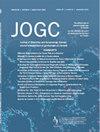技术更新No. 462:异常的母体血清标记物和不良妊娠结局。
IF 2.2
Q2 OBSTETRICS & GYNECOLOGY
引用次数: 0
摘要
目的:回顾妊娠早期或中期异常非整倍体筛查血清标志物与不良妊娠结局之间的关系,并为卫生保健专业人员提供处理此类异常血清标志物患者的建议。目标人群:为孕妇提供产前护理的卫生保健提供者,包括全科医生、产科医生、助产士和母胎医学专家。益处、危害和成本:实施本技术更新中的建议应提高临床医生在预防干预和产前监测方面管理异常产妇血清标志物结果的能力。*证据:通过检索PubMed或MEDLINE、CINAHL和The Cochrane Library,检索至2024年5月的已发表英文文献,使用适当的控制词汇,检索MeSH术语(胎儿生长迟缓、小于胎龄、子痫前期、早产)和关键词(胎儿生长受限、生长迟缓、IUGR、FGR、低出生体重、小于胎龄、多普勒、胎盘、子痫前期、妊娠高血压疾病、hCG、人绒毛膜促性腺激素、PAPP-A,妊娠相关血浆蛋白-a,抑制素-a,未结合雌三醇,PlGF,胎盘生长因子,AFP,甲胎蛋白,产前筛查)。结果仅限于系统评价、随机对照试验/对照临床试验和观察性研究。灰色文献是通过检索卫生技术评价和卫生技术相关机构、临床实践指南收集、临床试验注册、国家和国际医学专业学会的网站来确定的。验证方法:作者使用分级建议评估、发展和评价(GRADE)方法对证据质量和建议的强度进行评级。参见在线附录A(表A1为定义,表A2为解释)。目标受众:产科医生,家庭医生,护士,助产士,母胎医学专家,以及其他提供围产期护理的卫生保健提供者。摘要:异常血清标志物的解释和管理技术更新。本文章由计算机程序翻译,如有差异,请以英文原文为准。
Technical Update No. 462: Abnormal maternal serum markers and adverse pregnancy outcomes
Objective
To review the current data on the association between abnormal first- or second-trimester aneuploidy screening serum markers and adverse pregnancy outcomes, as well as provide health care professionals with recommendations for managing patients with such abnormal serum marker results.
Target Population
Health care providers involved in antenatal care for pregnant individuals, including general practitioners, obstetricians, midwives, and maternal-fetal medicine specialists.
Benefits, Harms, and Costs
Implementation of the recommendations in this technical update should increase clinician competency in managing abnormal maternal serum markers results with respect to preventive interventions and antenatal surveillance.
∗Evidence
Published literature in English was retrieved through searches of PubMed or MEDLINE, CINAHL, and The Cochrane Library through to May 2024 using appropriate controlled vocabulary via MeSH terms (fetal growth retardation, small for gestational age, preeclampsia, preterm birth) and keywords (fetal growth restriction, growth retardation, IUGR, FGR, low birth weight, small for gestational age, Doppler, placenta, preeclampsia, hypertensive disorders of pregnancy, hCG, human chorionic gonadotropin, PAPP-A, pregnancy-associated plasma protein-A, inhibin-A, unconjugated estriol, PlGF, placental growth factor, AFP, alpha-fetoprotein, prenatal screening). Results were restricted to systematic reviews, randomized controlled trials/controlled clinical trials, and observational studies. Grey literature was identified by searching the websites of health technology assessment and health technology-related agencies, clinical practice guideline collections, clinical trial registries, and national and international medical specialty societies.
Validation Methods
The authors rated the quality of evidence and strength of recommendations using the Grading of Recommendations Assessment, Development and Evaluation (GRADE) approach. See online Appendix A (Tables A1 for definitions and A2 for interpretations).
Intended Audience
Obstetricians, family physicians, nurses, midwives, maternal-fetal medicine specialists, and other health care providers who provide perinatal care.
Tweetable Abstract
Technical update for the interpretation and management of abnormal serum markers
Summary Statements
- 1.Abnormal levels of placenta-derived proteins used in the first trimester (low PAPP-A, βhCG, or PlGF) or second trimester (low uE3, or high elevated hCG, AFP, or Inhibin-A) aneuploidy screening (also known ‘markers’) may be associated with placenta-mediated complications such as preeclampsia, fetal growth restriction, placental abruption, stillbirth, and preterm birth. (Strong)
- 2.The optimal management of patients with abnormal markers remains unclear and depends on the local availability of resources such as ultrasound and maternal serum markers. (Moderate)
- 3.The individual predictive capacity of these markers for placenta-mediated complications is low and falls below the stringency required for an effective screening test. (Strong)
- 4.First-trimester multimodal screening that combines maternal characteristics, biophysical markers (blood pressure and uterine artery Doppler when available), and serum markers (PlGF and/or PAPP-A) is the most accurate screening method for the prediction of preterm preeclampsia and using aspirin prophylaxis. (Strong)
Recommendations
- 1.Aneuploidy screening serum markers should not be used alone to screen for placenta-mediated complications unless they are considered within a broader multimodal screening strategy. (Good Practice Point, Moderate Quality)
- 2.In patients in which maternal serum markers are not available (e.g., those who performed non-invasive prenatal testing [NIPT], had a preimplantation genetic testing, or those who decline aneuploidy screening, etc.), first- or second-trimester serum markers should not be tested solely for the purpose of predicting placenta-mediated complications. (Good Practice Point, Moderate Quality)
- 3.A single abnormal first- -trimester marker, or a single mildly abnormal second-trimester marter, are not an indication for aspirin prophylaxis to prevent placenta-mediated complications. (Good Practice Point, Moderate Quality)
- Mildly abnormal 1st trimester markers: PAPP-A, PlGF<0.4 MoM; βhCG<0.35 MoM
- Mildly abnormal 2nd trimester markers: uE3≤0.5 MoM; Inhibin≥2.0 MoM; AFP>1.8 MoM, hCG≥2.0 MoM
- 4.Aspirin prophylaxis should be considered in cases where there is:
- (i)First trimester serum markers: a combination of two abnormal serum markers, particularly low PAPP-A (<0.4 MoM) and low PlGF (<0.4 MoM);
- (ii)Second trimester serum markers: the presence of one severely abnormal serum marker (Inhibin≥3.0 MoM; AFP ≥ 2.5 MoM, hCG≥4.0 MoM) or the combination of two mildly abnormal serum markers in the second trimester;
- (iii)a positive first-trimester multimodal screening that includes maternal characteristics, biophysical markers (blood pressure and uterine artery Doppler when available), and serum markers (PlGF and/or PAPP-A). and should be ideally started by ≤16 weeks of gestation at bedtime until 36 weeks of gestation (Good Practice Point, Moderate Quality)
- (i)
- 5.In the absence of first- or second-trimester serum screening, risk stratification during the second trimester using multimodel screening (which should include maternal PlGF test and/or uterine artery Doppler) may be considered to guide maternal and fetal surveillance. (Good Practice Point, Moderate Quality)
- 6.Patients identified as high risk for placenta-mediated complications should be educated about the signs and symptoms of preeclampsia. These patients should undergo close blood pressure monitoring and fetal growth should be assessed by ultrasound at least once between 30-34 weeks of gestation, including Doppler assessment. (Good Practice Point, Moderate Quality)
求助全文
通过发布文献求助,成功后即可免费获取论文全文。
去求助
来源期刊

Journal of obstetrics and gynaecology Canada
OBSTETRICS & GYNECOLOGY-
CiteScore
3.30
自引率
5.60%
发文量
302
审稿时长
32 days
期刊介绍:
Journal of Obstetrics and Gynaecology Canada (JOGC) is Canada"s peer-reviewed journal of obstetrics, gynaecology, and women"s health. Each monthly issue contains original research articles, reviews, case reports, commentaries, and editorials on all aspects of reproductive health. JOGC is the original publication source of evidence-based clinical guidelines, committee opinions, and policy statements that derive from standing or ad hoc committees of the Society of Obstetricians and Gynaecologists of Canada. JOGC is included in the National Library of Medicine"s MEDLINE database, and abstracts from JOGC are accessible on PubMed.
 求助内容:
求助内容: 应助结果提醒方式:
应助结果提醒方式:


